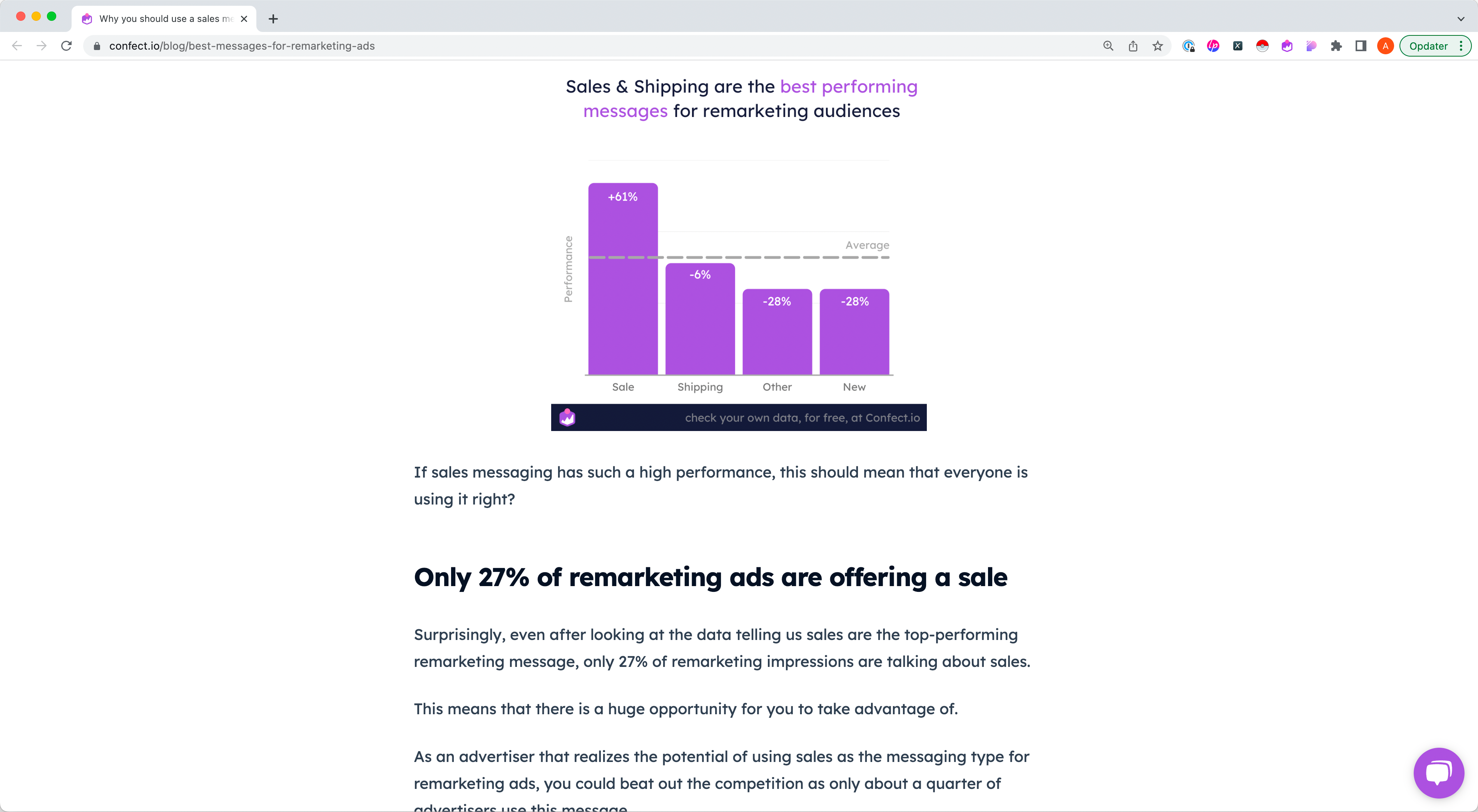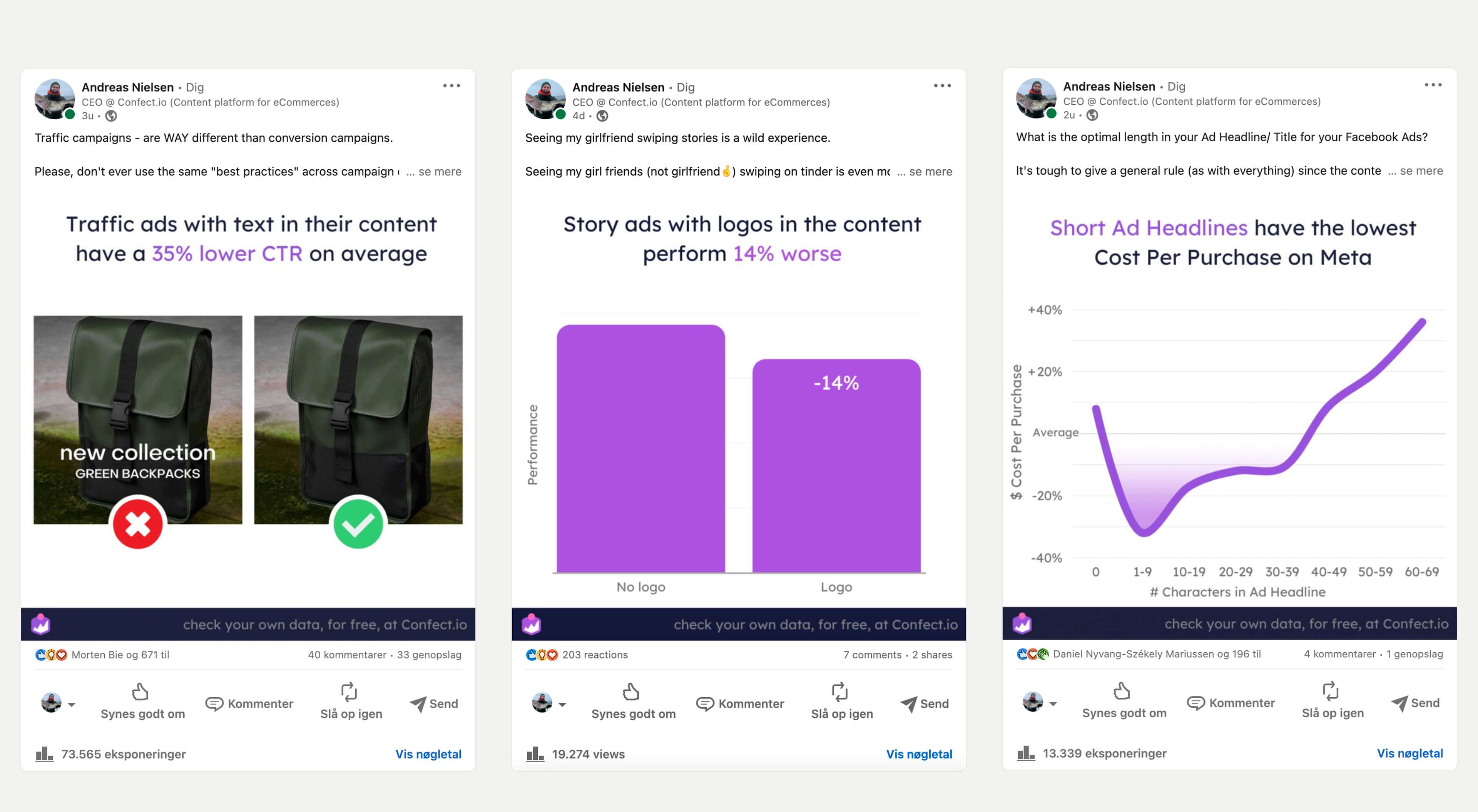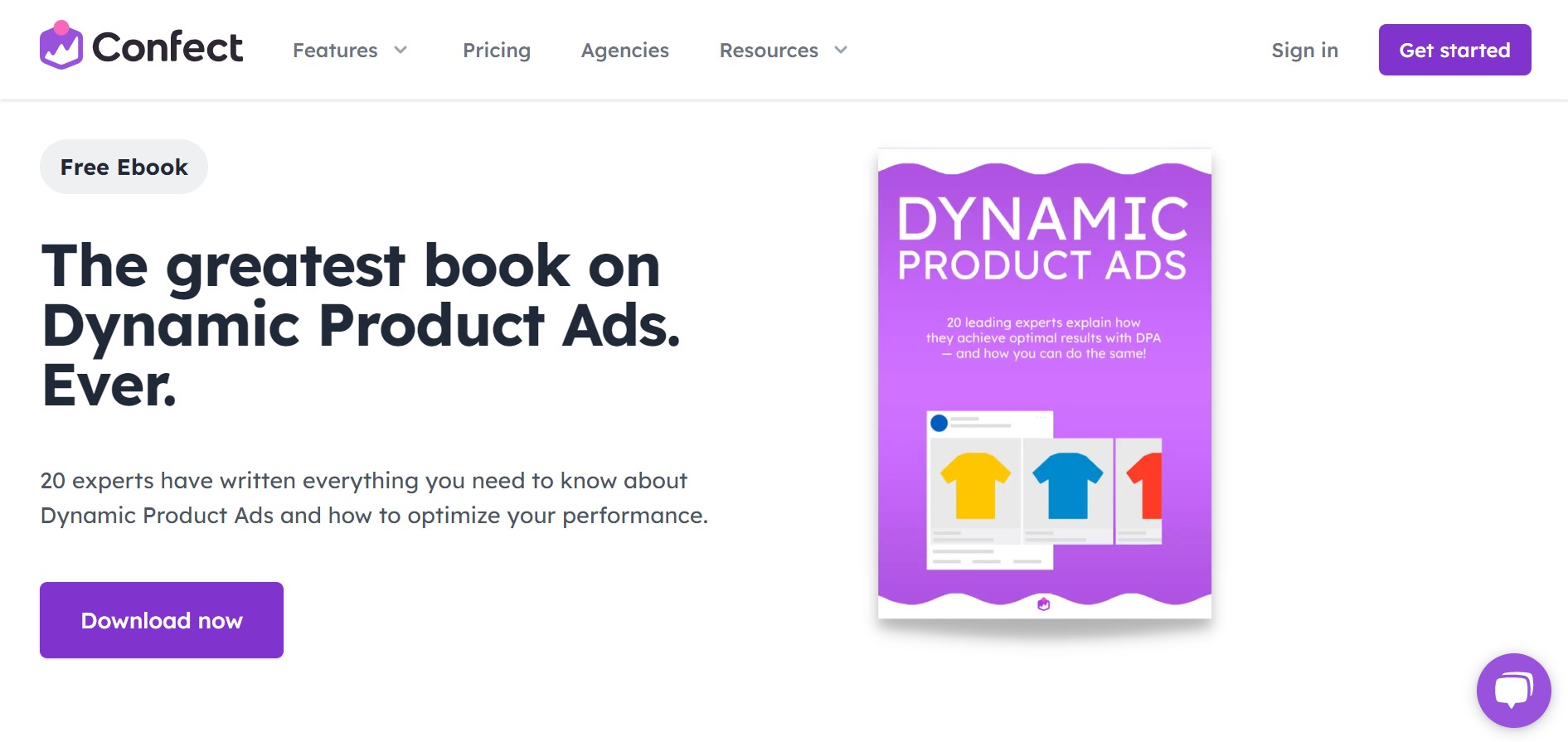Using Confect for your own marketing
Share the insights available to you and create marketing content for your agencyTable of Contents
Generating content ideasStreamlining content production1. Decide on the topic2. Set filters3. Get loads of insights4. Copy and paste the insights and add your thoughts5. Expand on your thoughts and post laterHow we use it at ConfectBlog postsLinkedIn postsWebinarsEmailsE-books and resourcesIf you’re publishing content as an agency, chances are you are diving deep into theories and trying to share valuable insights with your audience.
Wouldn’t it be amazing if you could also prove that what you’re suggesting actually works in the real world?
Also, by providing actionable tips and insights that work, you are sure to be perceived as the expert on the subject.
That’s exactly why using your Industry Analytics can be so smart and valuable.
Generating content ideas
Running out of ideas for blogs? Or social media posts?
A great way to get inspired is simply browsing through the industry insights available to you and seeing if something catches your eye.
Inside Confect, there are a number of different dimensions you can analyze, such as which design and message choices work in each industry. With your agency’s expertise, we’re sure you’ll come up with interesting topics to talk about, using these insights and combining them with theory.
Please note that when sharing these insights externally, you are required to mention or link to Confect.
Streamlining content production
This is the process we are using at Confect to efficiently turn insights into ready-to-be-published content for our social media, blogs and email marketing.
Feel free to copy our method ;)
1. Decide on the topic
The first step is to decide what you want your new content to be about.
Browse through the insights available and write down interesting comparisons or data that is available to you.
For example, if your agency specializes in design, you can write about the use of colors for paid social and back it up with real-world data.
2. Set filters
Next, you will need to filter down the insights to make sure they are relevant to your audience.
For example, if many of your clients come from the fashion industry, you can take a look at specifically what color choices you see working for most of your fashion clients. You might also find that different colors work well for conversions, compared to traffic objectives.
Another great way to filter is by using different time periods. For example, the ideal use of colors will undoubtedly vary from Black Friday to Christmas. Why not share these findings with your target group?
3. Get loads of insights
Once you have your topic picked, and have narrowed your focus down using filters, it’s time to find as many relevant insights as you possibly can.
With our example of colors, you could gather insights about the ideal brightness, saturation, primary color of the ad, and color temperature.
While playing around with the filters, you have probably found multiple interesting differences. So why not also get insights for those? How does the ideal color change with campaign objectives? How about different time-specific campaigns? That is all just the tip of the iceberg.
4. Copy and paste the insights and add your thoughts
Once you know exactly what insights you want to use, copy them into a database of your choice (we are using Notion tables), add some bullet points with your thoughts, and make sure to categorize them so you’re not drowning in a load of unorganized insights.
5. Expand on your thoughts and post later
Now it’s time to add a unique touch to these insights and get closer to a finished piece of content.
Depending on what format of content you are creating, you can write your interpretation of the data or use it to create “best practices” guides or videos.
Once you are finished, simply save the finished product in some type of database or directly schedule it to be posted through your CMS.
How we use it at Confect
Here’s a list of examples and ways we use our insights at Confect.
Blog posts
These insights, combined with some interpretation and theory make for amazing articles.
We publish blog posts about general topics, such as best practices for eCommerce advertisers, or more specific information about time-sensitive campaigns or specific industries.

LinkedIn posts
We also aim to share tips with our audience.
Using these insights can be a simple way to provide actionable advice to content-aware advertisers. They are also easy and quick to digest, making them perfect for social media.

Webinars
Once we gather enough insights on a single topic, we put them together to create slides for a webinar, which we then present live.
This can range from general insights such as eCommerce ads, to more specific and time-sensitive topics such as Black Friday ads or retargeting.

Emails
These short bites of information can also be used perfectly for email marketing flows.
Instead of annoying our list with overly promotional content, we want to provide them with value they can apply in their own advertising.
.png)
E-books and resources
Lastly, being the most resource-intensive content, long-form resources.
In order to do this, you’ll need to understand the specific needs and problems of your audience, provide a solution, and back it up with data insights.
This makes for a perfect lead magnet on your website, but requires a bit more effort than the other pieces of content.
